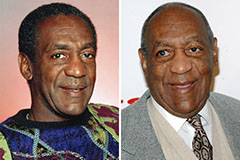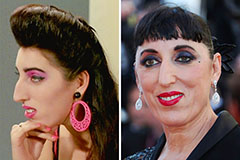Necessary Tips for Effective Poster Printing That Astounds Your Audience
Producing a poster that absolutely captivates your audience needs a tactical method. What about the mental influence of shade? Let's check out just how these components work together to produce an excellent poster.
Understand Your Audience
When you're making a poster, understanding your target market is vital, as it shapes your message and design choices. First, think of who will see your poster. Are they pupils, specialists, or a general crowd? Understanding this helps you customize your language and visuals. Usage words and photos that resonate with them.
Next, consider their passions and requirements. If you're targeting pupils, engaging visuals and appealing phrases may order their focus even more than formal language.
Finally, believe regarding where they'll see your poster. Will it remain in a busy corridor or a quiet café? This context can affect your style's shades, typefaces, and design. By keeping your audience in mind, you'll produce a poster that successfully connects and mesmerizes, making your message unforgettable.
Choose the Right Size and Layout
Exactly how do you choose the best dimension and layout for your poster? Begin by thinking about where you'll present it. If it's for a big event, go with a larger size to assure exposure from a distance. Consider the area available also-- if you're restricted, a smaller sized poster could be a far better fit.
Next, choose a style that enhances your content. Straight layouts function well for landscapes or timelines, while vertical layouts fit portraits or infographics.
Don't fail to remember to check the printing alternatives offered to you. Many printers offer basic dimensions, which can save you time and cash.
Finally, maintain your target market in mind. By making these options carefully, you'll produce a poster that not only looks great but additionally efficiently connects your message.
Select High-Quality Images and Graphics
When creating your poster, selecting top notch photos and graphics is essential for a professional appearance. Make sure you choose the best resolution to avoid pixelation, and think about making use of vector graphics for scalability. Do not ignore color equilibrium; it can make or damage the overall allure of your layout.
Choose Resolution Wisely
Picking the appropriate resolution is important for making your poster stand out. If your photos are low resolution, they may show up pixelated or blurred as soon as printed, which can decrease your poster's effect. Spending time in picking the right resolution will certainly pay off by developing an aesthetically spectacular poster that catches your audience's attention.
Utilize Vector Graphics
Vector graphics are a video game changer for poster layout, offering unequaled scalability and top quality. Unlike raster pictures, which can pixelate when enlarged, vector graphics keep their intensity no matter the size. This suggests your layouts will certainly look crisp and professional, whether you're printing a tiny leaflet or a substantial poster. When producing your poster, pick vector files like SVG or AI styles for logos, symbols, and pictures. These layouts allow for easy manipulation without losing high quality. Furthermore, make certain to include high-quality graphics that line up with your message. By using vector graphics, you'll guarantee your poster mesmerizes your audience and stands out in any kind of setting, making your design initiatives genuinely beneficial.
Take Into Consideration Color Equilibrium
Color equilibrium plays an essential function in the general impact of your poster. When you select photos and graphics, see to it they complement each various other and your message. Also many bright colors can bewilder your target market, while plain tones might not get hold of interest. Go for a harmonious combination that enhances your web content.
Choosing high-quality pictures is crucial; they ought to be sharp and vibrant, making your poster aesthetically appealing. Prevent pixelated or low-resolution graphics, as they can interfere with your expertise. Consider your target market when selecting colors; various tones evoke various emotions. Examination your color options on various displays and print formats to see just how they equate. A healthy color design will visit this web-site certainly make your poster stick out and reverberate with customers.
Select Vibrant and Readable Font Styles
When it involves fonts, dimension actually matters; you want your text to be conveniently readable from a distance. Limitation the number of font types to keep your poster looking clean and specialist. Additionally, don't fail to remember to make use of contrasting shades for clarity, guaranteeing your message sticks out.
Font Dimension Matters
A striking poster grabs focus, and font style dimension plays an important function in that first impact. You want your message to be easily legible from a distance, so pick a font style dimension that stands out.
Don't forget concerning hierarchy; bigger dimensions for headings direct your audience via the info. Eventually, the best typeface dimension not only draws in visitors however also keeps them engaged with your material.
Limit Font Style Kind
Selecting the appropriate font style kinds is necessary for guaranteeing your poster grabs focus and efficiently interacts your message. Limitation on your own to two or 3 font types to preserve a clean, cohesive look. Strong, sans-serif typefaces typically work best for headlines, as they're easier to read from a range. For body text, select a basic, readable serif or sans-serif typeface that matches your headline. Blending as well lots of font styles can bewilder customers and weaken your message. Stay with constant font dimensions and weights to develop a hierarchy; this assists direct your target market with the you can check here info. Remember, clearness is key-- picking bold and readable fonts will certainly make your poster attract attention and keep your target market engaged.
Contrast for Clearness
To assure your poster records focus, it is vital to utilize bold and legible fonts that create solid contrast against the history. Choose colors that stand out; for instance, dark message on a light history or vice versa. With the right font style options, your poster will certainly shine!
Make Use Of Color Psychology
Colors can evoke feelings and affect understandings, making them an effective tool in poster design. When you pick shades, think concerning the message you wish to share. Red can impart enjoyment or seriousness, while blue frequently promotes trust and calmness. Consider your audience, as well; different cultures may interpret colors uniquely.

Bear in mind that shade mixes can impact readability. Check your choices by stepping back and examining the general effect. If you're going for a particular feeling or feedback, don't hesitate to experiment. Eventually, making use of color psychology successfully can produce a lasting impression and draw your target market in.
Include White Room Successfully
While it may appear counterintuitive, integrating white area efficiently is essential for an effective poster design. White space, or unfavorable room, isn't just empty; it's an effective aspect that enhances readability and focus. When you provide your message and images room to take a breath, your target market can quickly digest the information.

Usage white area to develop an aesthetic hierarchy; this overviews the audience's eye to the most integral parts of your poster. Bear in mind, much less is usually more. By grasping the art of white room, you'll create a striking and efficient poster that astounds your audience and connects your message plainly.
Consider the Printing Products and Techniques
Picking the ideal printing materials and strategies can considerably enhance the total influence of your poster. First, take into consideration the sort of paper. Shiny paper can make colors pop, while matte paper supplies an extra subdued, expert appearance. If your poster will be shown outdoors, choose weather-resistant products to assure durability.
Following, believe regarding printing strategies. Digital printing is excellent for vivid shades and fast turnaround times, while countered printing is perfect for big quantities and constant top quality. Do not neglect to check out specialty surfaces like laminating or UV finishing, which can secure your poster and add a polished touch.
Lastly, review your budget plan. Higher-quality products often come at a premium, so balance high quality with price. By meticulously selecting your printing materials and strategies, you can develop a visually magnificent poster that successfully communicates your message and records your target market's focus.
Often Asked Questions
What Software Is Finest for Designing Posters?
When making posters, software program like Adobe Illustrator and Canva stands apart. You'll find their straightforward user interfaces and extensive devices make it simple to produce sensational visuals. Try out both to see which suits you finest.
How Can I Ensure Shade Precision in Printing?
To ensure color precision in printing, you need to calibrate your monitor, usage shade profiles particular to your printer, and print examination samples. These actions help you accomplish the vivid colors you visualize for your poster.
What File Formats Do Printers Choose?
Printers typically favor file layouts like PDF, TIFF, and EPS for their high-quality output. These layouts keep quality and shade integrity, ensuring your layout looks sharp and professional when published - poster prinitng near me. Stay clear of utilizing low-resolution layouts
Just how Do I Compute the Publish Run Quantity?
To determine your print run quantity, consider your audience size, spending plan, and distribution strategy. Quote the number of you'll need, considering possible waste. Readjust based on previous experience or comparable tasks to ensure you meet need.
When Should I Begin the Printing Refine?
You need to start the printing process as quickly as you settle your layout and collect all required authorizations. Ideally, allow enough lead time for alterations and unanticipated delays, intending for a minimum of 2 weeks before your target date.
 Amanda Bearse Then & Now!
Amanda Bearse Then & Now! Elin Nordegren Then & Now!
Elin Nordegren Then & Now! Lisa Whelchel Then & Now!
Lisa Whelchel Then & Now! Bill Cosby Then & Now!
Bill Cosby Then & Now! Rossy de Palma Then & Now!
Rossy de Palma Then & Now!